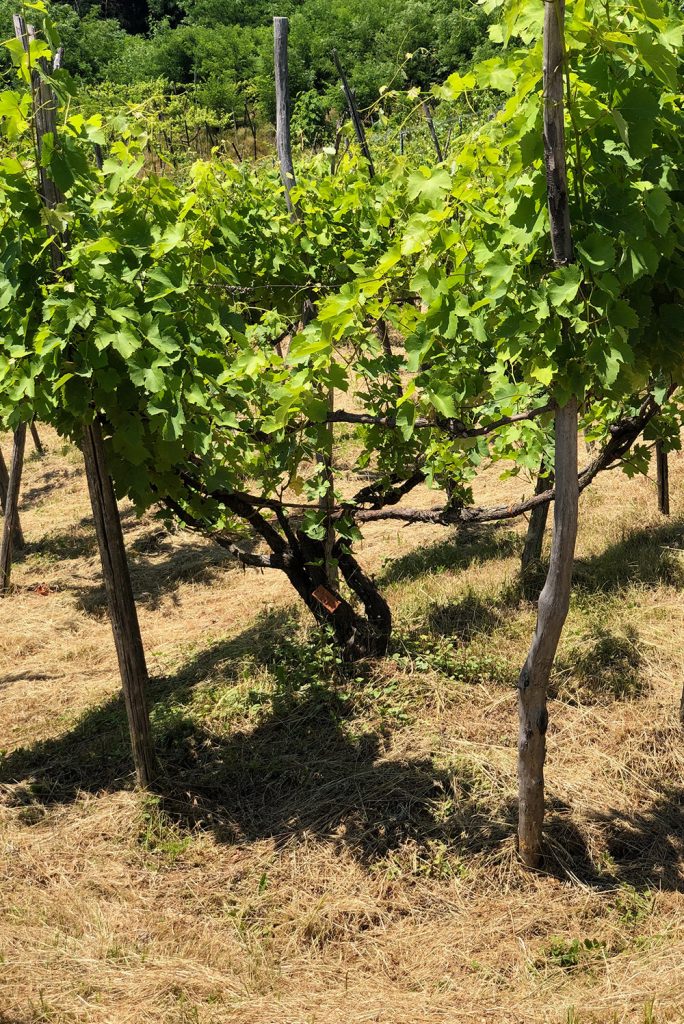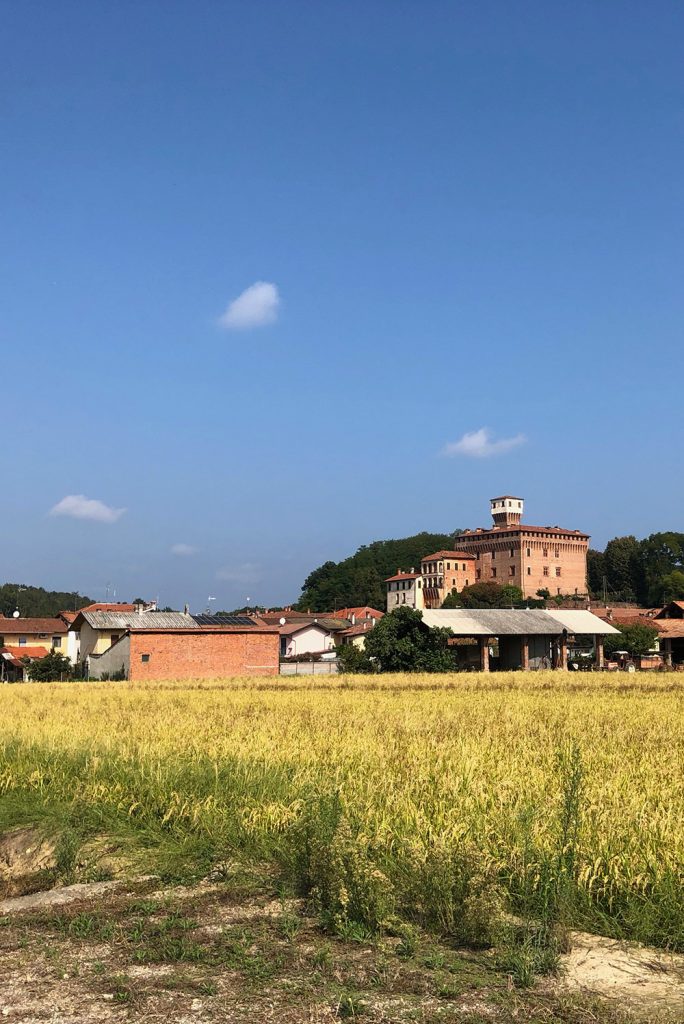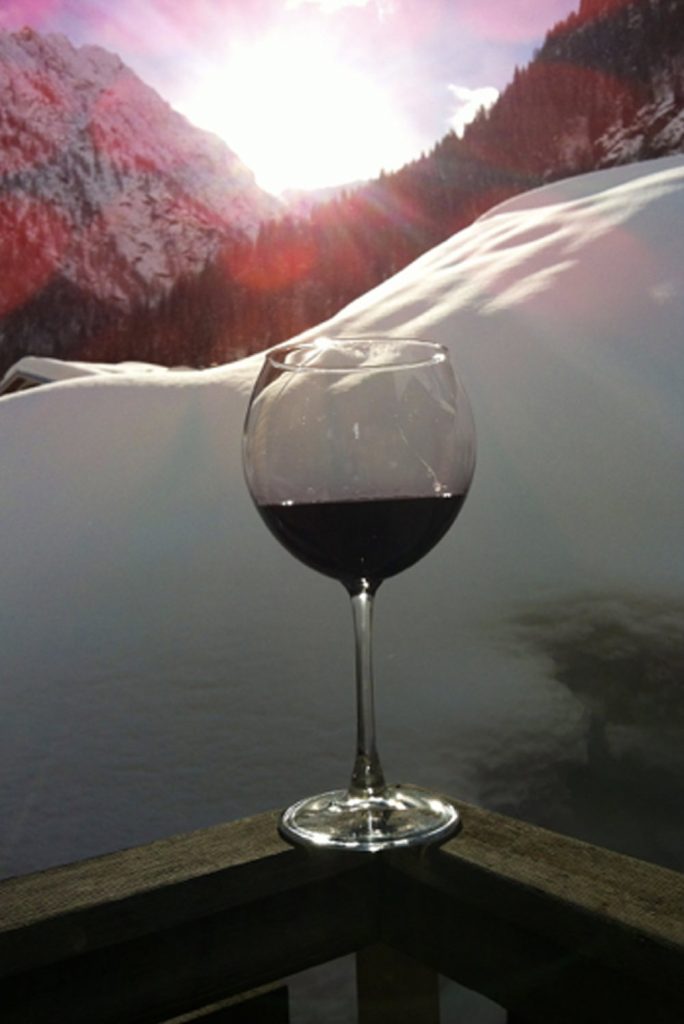THE SUPER VOLCANO
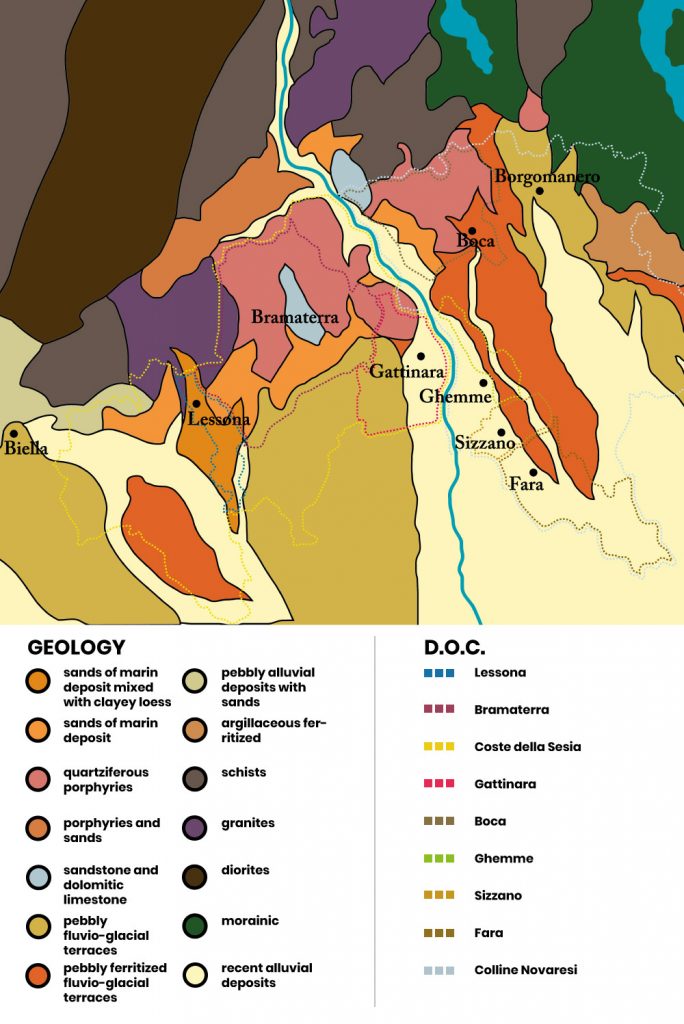
The term “Alto Piemonte” is unofficial, it cannot be found on any wine labels, or on wine maps of the region. It is used to connect the group of Northern Piemonte townships that all produce wines from Nebbiolo, as opposed to the “South Piemonte”, which is so widely known, that most people identify “Piemonte wines” tout court with the ones from the famous appellations in the South, ranging from Barolo and Barbaresco to Alba, Asti, Dogliani, Langhe, Gavi and Monferrato.
In the North of Piemonte – Alto Piemonte hereinafter – winemaking is concentrated on the foothills and along the alpine valleys. The hills stand with their backs to the mountains, facing the plains. What we really like about Alto Piemonte, is the incredible variety of soils and the great differentiation in wines. In recent years, the hotter climate has further enhanced the quality of the grapes. However, unlike what is happening in many prestigious wine regions, the proximity to the Alps, and in particular the Monte Rosa massif with its glaciers, always allows for cooler nights. This brings out a great complexity of aromas in the grapes and an abundance of nuances and scents. In better known territories, with lesser variation in temperature due to warming, such aromas tend to become secondary. The wines from Alto Piemonte are more subtle and complex, albeit less immediate, than many of their better known brothers in Piemonte and develop greatly in time. They are perfect for ageing and guaranteed to prove worth the wait!
The “supervulcano” has left us a great vastness of different types of minerals and volcanic soils. Over thousands of years, glaciers moved rocks and broke them to pieces. The plains once were the bottom of a sea. When the alps were formed, the sandy sea floor formed hills and ended on top of existing soil. What makes these lands particularly interesting, is the great variety of different soils combined with particular climatic conditions, governed by the proximity of the Alps that determine a good temperature range, good humidity levels and many sunny days, with considerable cooling at night. All these very different soils and the specific microclimate render wines of great diversity and depth.
When climbing from the flat Po Valley, from Milan, and Malpensa airport, to the white peaks of the Alps, after a short while we encounter the first hills. Some of them are glacial moraines, made of rocks, clay, and pebbles. Others, were once the bottom of the sea and are made of sand, filled with fossils of shells. Upon reaching our valley, Valsesia, we enter a “super volcano” (supervulcano.it), a UNESCO world heritage site. About 300 million years ago, when there was only one continent on earth (geologists named it Pangea), a volcano exploded, erupting an immense amount of material and releasing energy comparable to that of 250 atomic bombs. Later, between 60 and 30 million years ago, the same processes that formed the Alps, lifted and rotated the part of the earth’s crust where the exploded volcano was, flipping the volcano upside down to about 30 km deep: this is a unique case in the world! Different layers of rock, stone and sand, which normally lie deep underground, were brought to the surface.
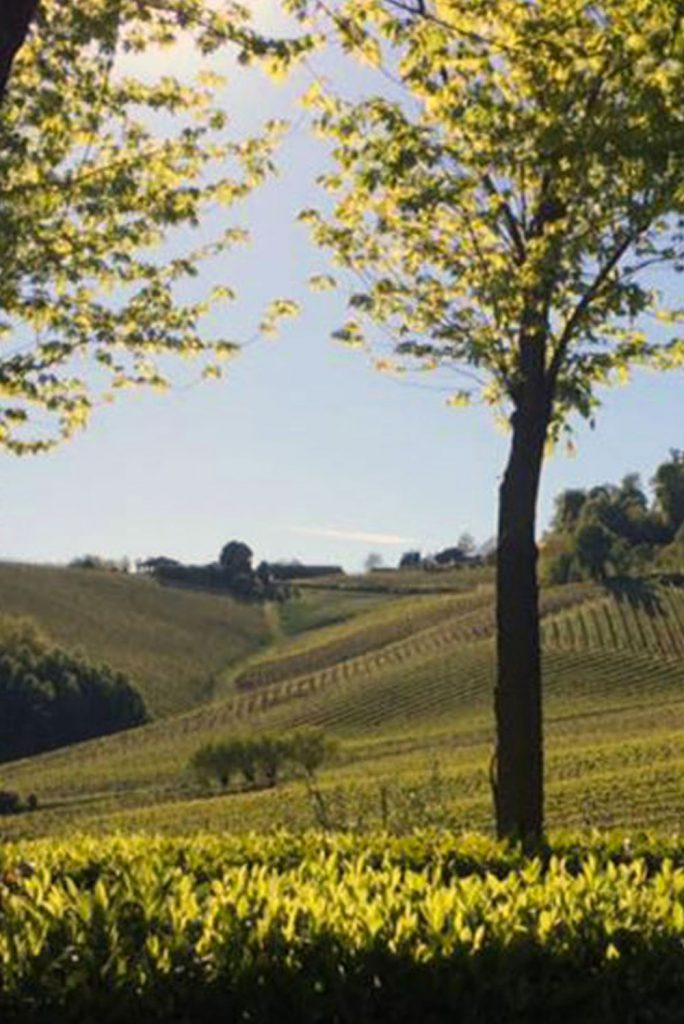
For centuries the wine of these areas was considered of great quality. The Romans praised them and the clerics boasted of having them on their tables. Then, partly because of the cooling of the Alps in the second half of the 1800s, the phylloxera epidemic in the 1870s, and above all because of massive industrialization from the 1950s, man progressively abandoned the vineyards. In the 1890ies, vineyards covered around 42 thousand hectares of land. In the 1980s, it was less than 700. Woods claimed back the hills and it is hard to spot any vineyards at all. In the last thirty years, however, the trend has changed: many young people rediscover the vineyard of their grandparents and great-grandparents. We are witnessing a return to the ancient in a contemporary key with young and passionate winemakers, who also use the latest technology and international knowledge to produce wines of great value and great diversity. They all understand the value of the unique territory in which they operate and work to make authentic and natural wines.
This is where we want to start our journey.
The wines of Alto Piemonte are not as well known as other great Piedmontese wines, like Barolo, Barbaresco, Dolcetto or Barbera. And yet they are no lesser! These wines are unmistakable in their firm character, concentrated, but at the same time with great elegance and finesse, complex in perfume and taste, long-lasting. These are wines that develop over time and can be aged for many years. Alto Piemonte comprises of two DOCG areas Ghemme and Gattinara and different DOCs: Boca, Bramaterra, Coste della Sesia, Colline Novaresi, Canavese, Carema, Lessona, Valli Ossolane, Fara, and Sizzano. Caluso is an exclusively white DOC wine.
Soil and climate are ideal for the great red grape variety Nebbiolo! The other main grape varieties are autochthonous reds: Vespolina, Croatina and Uva Rara (aka Bonarda Novarese) and the only admissible white, Erbaluce (aka Greco Novarese). There are also small productions of other grapes, lesser used and known, such as Malvasia di Boca.
OUR WINERIES
GHEMME
Continuing towards the A26 motorway that connects Valsesia with Milan, Genoa and Turin, Malpensa, Varese and Switzerland, staying always on the orographic left of the river Sesia, we find the territory of Ghemme. Here you can see the vineyards along the morainic hill formed by stones, pebbles, clay and fluvial sand brought down by the glaciers that descended from Monterosa.
FARA & SIZZANO
Continuing our journey on the orographic left of the Sesia past Ghemme, we find the town of Sizzano. Here two young winemakers, Paolo Cominoli of Cantina Comero and Paride Chiovini have rediscovered the ancient vineyards of their grandparents. Paolo’s grandmother still works the vines daily.
